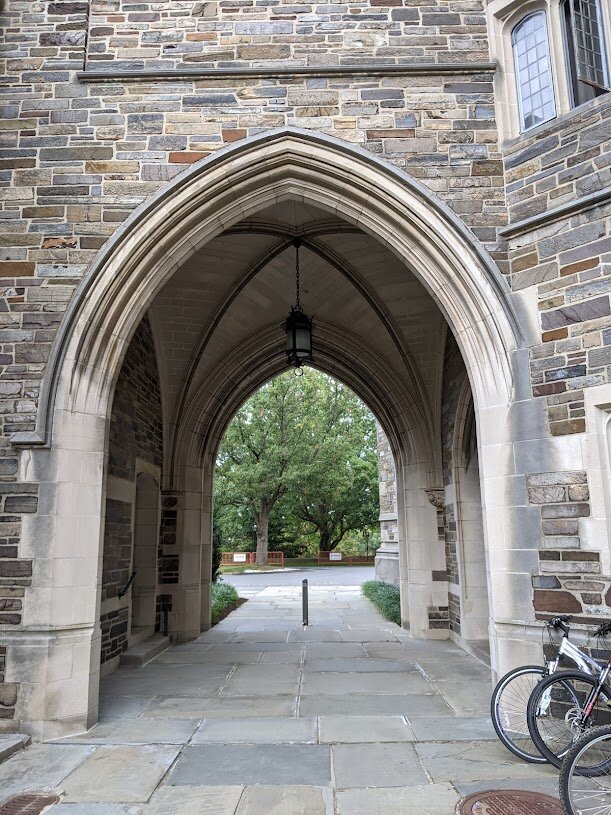On my recent trip to the East, I spent some time in Princeton. I show here some examples of the buildings in and around the campus. First, the neo-gothic buildings which were inspired by those of Oxford and Cambridge and were built in the first part of the 20th century, so are late examples.
As well as the college buildings the university chapel was built in the gothic style, complete with large stained glass windows. The beauty and grandeur, it seems persuaded the Presbyterians to include such images and in a building style not normally associated with Calvinist low worship and stripped-down artistic sensibilities.
The neo-gothic style began in England as a movement to rejuvenate church architecture and make it more obviously Christian and linked to the liturgy. The architect who led this transformation was AW Pugin, a Catholic convert who, in reaction against the neo-classical style that dominated at the time, established an architectural company that designed many of the new Catholic churches and cathedrals being built in England. He wrote several books perhaps the most famous being The True Principles of the Pointed, or Christian, Architecture, which was published when he was just 29 years old in 1841. This set out the basis of the successful reestablishment of a tradition that quickly spread across much of the globe, due to the great influence that Britain had at the time. I see it not as an imitation of an earlier time, but rather as an authentic re-establishment and development of the original gothic tradition.
The new style not only worked in harmony with the liturgy now being celebrated in the new Catholic churches but also that of the Anglican Church, which was establishing a traditional approach to the form of its liturgy under the influence of the Oxford Movement, among others. As with all authentic liturgical traditions, its style began gradually to influence the broader culture, and soon grand civic buildings, universities, hotels, and railway stations were being erected in styles derived from the church architecture. The tower that houses Big Ben at the new Houses of Parliament was designed by Pugin, for example.
In the US, those who possessed the wealth of this emerging economic power sought to build in the new style and attracted the leading architects from England as well as training many of the architectural students to design neo-gothic buildings. Many churches were built and again, this led in time to other buildings. The new universities, especially those of the Ivy League, wished to project themselves as the American equivalents of Oxford and Cambridge and for several decades it became fashionable to build neo-gothic quadrangles with porter’s lodges, chapels, libraries, and dining halls in emulation of the old gothic Oxbridge colleges. Princeton built as part of this new fashion.
There are many charming American colonial style buildings as well, from an earlier age. This is the house that Albert Einstein lived in after the Second World War.
It often occurs to me that the exterior of the building in some ways reveals what is going on in the interior of the mind of the person who designed it. The modernist worldview is represented in the modern buildings with the art and architecture schools in the vanguard. I will leave it to you to decide whether or not this represents a cultural advancement, or a cultural decline.
Princeton School of Architecture
Princeton University Art Museum
There are beautiful gardens on the campus too, and rather than leave you with a low, here are some flowers to cheer you up!


















